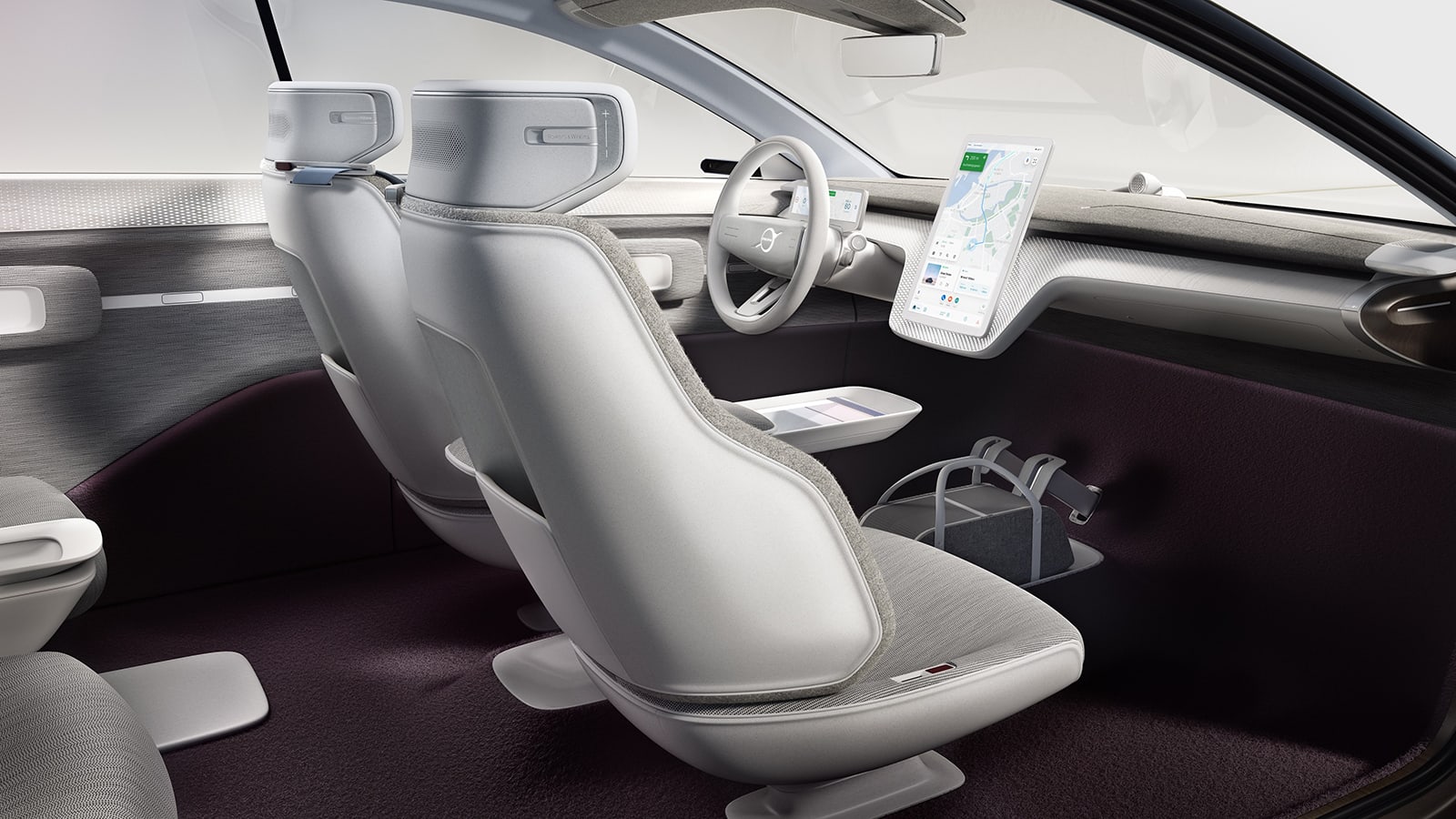Volvo has released a slew of information about where the company is heading, from battery technology to advanced driver aids. And it was all capped by the concept car you see above, the Volvo Concept Recharge. It all shows that the future of Volvo is stylish, electrified and equipped with the latest safety technology. So in a way exactly what you would hope and expect.
Volvo hasn’t said much about the Concept Recharge specs, but the design will clearly influence future Volvo models, including the company’s upcoming electric SUV to be unveiled next year. The front even closed faux grilles for a sculpted fascia. The shape is somewhat reminiscent of a grille, especially with the Volvo slash and emblem in the middle. The “Thor’s Hammer” headlamps remain, and in the case of the concept they have wild chasers that slide up and out of the way in the housing to make way for the actual projector headlamps at night. The entire shape of the car is based on the electric powertrain. It has a low floor and a glass roof, which means that the entire body can be made lower and slimmer without sacrificing space. The wheels are also pushed to the far edges. At the rear, the car features slim vertical taillights, continuing a Volvo design tradition.
On the roof, a lidar sensor is placed on top of the windshield. This is an important part of Volvo’s future as the next generation of vehicles, starting with the aforementioned SUV, will all come standard with one of these sensors. It will be used in conjunction with cameras, radar, real-time data, machine learning and map data to provide advanced driving aids, including what Volvo describes as “autonomous unsupervised driving” in specific circumstances. Basically, it will be SAE Level 3 autonomy, a step beyond the hands-free, but still controlled Level 2 systems like GM’s Super Cruise. It will only be available on specific roads in specific conditions, and so it won’t be able to handle the entire driveway-to-driveway driving task. The company expects to offer this level of autonomy on highways first, and it will only start in specific areas. It didn’t give an exact timeline for the rollout and it will be a more gradual increase over time, rather than launching everything all at once. The company also emphasized that it will not launch the features until they are really ready.

In addition to improvements to the driver assistance systems, Volvo is working on battery upgrades. It looks to improve the energy density of its lithium-ion batteries by 50 percent in the coming years. By the end of the decade, it’s aiming for a density of about 1,000 watts per liter, which it says would be comparable to solid-state battery technology. Increased charging speeds are also on the cards with 800-volt charging systems, plus two-way charging so that the car’s stored power can power homes and appliances.
Volvo also still pays a lot of attention to the cabin. With this Concept Recharge, the interior is airy and minimalistic with the use of high-quality materials. The wooden trim with integrated backlighting is particularly stylish and the rear seats with height-adjustable cushions are great for child safety and child visibility. Most relevant, however, is the instrument panel and infotainment system. These feature Volvo’s next-generation infotainment, which seems to move entirely towards touch controls. The layout is also very reminiscent of the Ford Mustang Mach-E with the slim instrument panel and large vertical infotainment screen. In this case, it’s a 15-inch screen.
We will see our first production implementations of this technology and styling with next year’s Volvo flagship SUV. It has been described as the successor to the XC90. Volvo noted that it will adopt a real name instead of an alphanumeric one, which is a big change for the brand. We may also see some of this technology appearing in the Polestar 3 crossover also on the way.
Related video:
